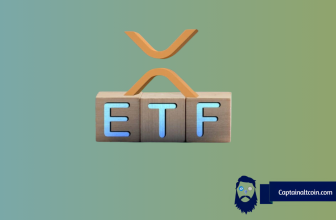
Uniswap, a leading decentralized exchange, has recently unveiled its Version 4 (V4) architecture. This new development is poised to be a significant catalyst for innovation in the Automated Market Maker (AMM) design landscape.
The V4 architecture introduces several new features that could revolutionize how liquidity pools function and evolve.
Find High-Potential Token, yPredict, powered by its native token $PRED, is emerging as a significant player in the crypto space. The presale YPRED, which is ongoing at ypredict.ai, has already raised over $2.25 million in seed round funding from early investors. As a new low market cap coin currently on presale, it powers an AI-based tool that predicts market movements and identifies high-potential tokens. The token also offers added utility for holders, unlocking access to a suite of analytics tools, including in-depth research into the tokenomics of upcoming crypto games and NFT projects. Get in on the Ground Floor and Unlock Exclusive Analytics Tools!
Show more +At the heart of Uniswap’s V4 architecture are ‘Hooks’ – externally deployed contracts that can modify the base concentrated liquidity pool. These hooks can alter pool parameters such as fees and even create entirely new pool functionalities.
Hooks are a game-changer as they open-source pool innovation. Instead of waiting for Uniswap to introduce new features like limit orders or dynamic fees, hooks empower developers to create these functionalities independently. This shift towards permissionless pool functionality could spur a wave of innovation in the Uniswap ecosystem.
They can be used to create a variety of functionalities for concentrated liquidity pools. These include Time-Weighted Average Market Makers (TWAMM), dynamic fees, and limit orders. These innovations could significantly enhance Uniswap’s trading interface and address the persistent issue of impermanent loss for Liquidity Providers (LPs).
Also, hooks implement custom logic for various lifecycle stages in a Uniswap pool. These stages include before and after pool initialization, LPs modifying positions, and before and after swaps or donations. This custom logic allows hooks to dynamically adjust swap fees and LP withdrawal fees, providing more flexibility and control over pool operations.
Developers can explore a variety of Solidity-implemented hook contracts on GitHub. These examples demonstrate the wide range of pool functionalities that can be built using the new V4 architecture.
In conclusion, Uniswap’s V4 architecture, with its introduction of hooks, is set to be a significant catalyst for innovation in the AMM design landscape. By empowering developers to create and modify pool functionalities, Uniswap is paving the way for a more dynamic and flexible decentralized exchange ecosystem.








